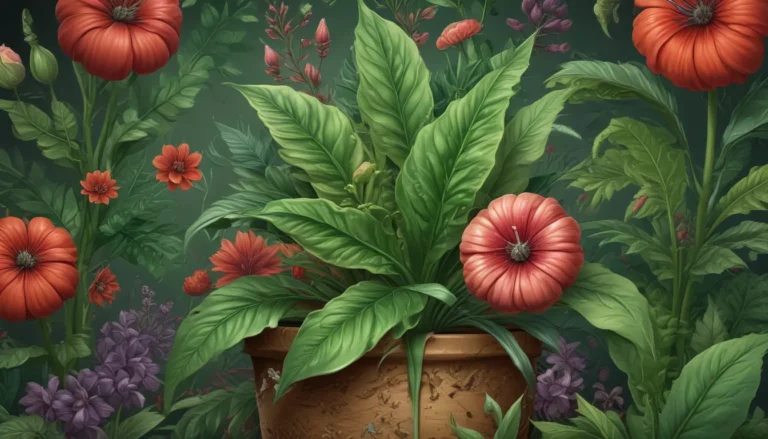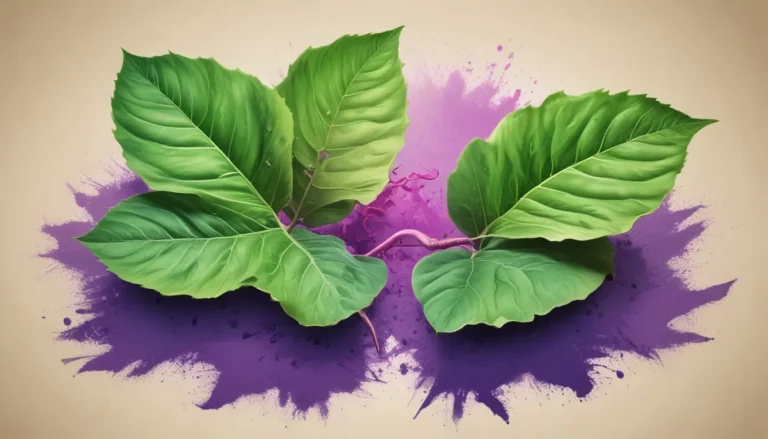A Note About Images: The images used in our articles are for illustration purposes only and may not exactly match the content. They are meant to engage readers, but the text should be relied upon for accurate information.
Plants are the unsung heroes of the natural world, equipped with astonishing abilities to adapt and thrive in a myriad of environments. One of the most intriguing aspects of plant biology is tropism, the phenomenon where plants exhibit growth or movement in response to external stimuli. From bending towards sunlight to reaching for water sources, plant tropisms play a vital role in their survival and reproductive success.
In this informative piece, we will embark on a journey into the captivating realm of plant tropisms, uncovering eight remarkable facts that shed light on the incredible adaptations and behaviors displayed by plants. From phototropism to thigmotropism, we will delve into the mechanisms that govern these tropisms, their significance in plant development, and the ingenious ways in which plants navigate their ever-changing surroundings to flourish.
Unveiling Plant Tropisms: Nature’s Adaptive Superpowers
- Plants possess an array of superpowers known as tropisms, enabling them to grow towards light, gravity, touch, water, and even scents. It’s as if they have a secret language to thrive in diverse environments.
- Picture plants engaging in their own version of yoga as they perform graceful spiral movements called nutation, blending various tropisms to explore their surroundings and bask in sunlight. It’s a mesmerizing dance choreographed by nature itself!
Understanding the Essence of Plant Tropisms
Plant tropisms encompass the growth responses exhibited by plants when exposed to external stimuli such as light, gravity, touch, moisture, and chemicals. These adaptive mechanisms allow plants to optimize their growth in different ecological settings.
Phototropism: Embracing the Light
Phototropism stands out as one of the most captivating plant tropisms, where plants curve and grow towards a source of light. This strategic response ensures that leaves receive ample sunlight for photosynthesis, with the hormone auxin playing a pivotal role in regulating this process.
Geotropism: Grounded in Gravity
Geotropism, also known as gravitropism, dictates how plants react to gravity. Roots exhibit positive geotropism by growing downward to access nutrients and water, while shoots display negative geotropism as they stretch towards light for optimal growth and photosynthesis.
Thigmotropism: The Art of Sensation
Thigmotropism showcases a plant’s ability to respond to physical touch or contact. Vines, like the tendrils of climbing plants, exhibit positive thigmotropism as they coil around structures for support, enabling the plant to ascend and access increased sunlight.
Hydrotropism: Chasing Water Trails
Hydrotropism involves the directional movement of a plant’s roots towards water sources. Displaying positive hydrotropism, roots grow in search of moisture to effectively explore the soil and absorb water for hydration and nutrient uptake.
Chemotropism: Tracing Scent Signals
Chemotropism reflects a plant’s response to chemical cues in its environment. This phenomenon is particularly evident in the growth of plant pollen tubes towards ovules for fertilization, guided by chemical gradients to ensure successful reproduction.
Thigmomorphogenesis: Growth Reshaped by Stress
Thigmomorphogenesis embodies the alteration in plant growth and form triggered by continual mechanical stimulation. For instance, plants exposed to persistent wind develop sturdier, shorter stems to endure stress, facilitating their adaptation to environmental challenges.
Nutation: The Spiraling Symphony of Plants
Nutation refers to the irregular, spiral movements displayed by plants during growth, combining multiple tropisms like phototropism, geotropism, and thigmotropism. This dynamic process enables plants to explore their surroundings and maximize sunlight exposure for sustained growth.
The realm of plant tropisms is a treasure trove of insights into how plants respond and flourish in their environments. By grasping the intricacies of these tropisms, we gain a deeper appreciation for the resilience and complexity of the plant kingdom.
In Essence
Plant tropisms serve as a testament to the remarkable adaptability and sensitivity of plants, showcasing their ability to navigate and adjust growth in response to external cues. From phototropism to gravitropism, these tropisms play a pivotal role in plants’ survival and reproductive triumphs. Unraveling the mysteries of plant tropisms not only enriches our understanding of plant biology but also offers practical applications in agriculture and horticulture. By harnessing the power of tropisms, we can steer plant growth to our advantage, optimizing yields and refining cultivation methods. The study of plant tropisms continues to evolve, with ongoing revelations and advancements poised to unlock new possibilities for sustainable farming and environmental preservation.
FAQs: Exploring Plant Tropisms
Q: What defines a tropism in plants?
A: A tropism in plants denotes their growth response to external stimuli like light, gravity, or touch.
Q: What are the various types of plant tropisms?
A: Plant tropisms encompass phototropism (light response), gravitropism (gravity response), thigmotropism (touch response), hydrotropism (water response), and chemotropism (chemical response).
Q: How do plants demonstrate phototropism?
A: Plants exhibit phototropism by orienting their growth towards or away from a light source. The hormone auxin plays a crucial role in this process, redistributing to the darker side of the plant to promote elongation towards light.
Q: Why is gravitropism significant for plants?
A: Gravitropism enables plants to align their growth with gravity, facilitating root growth towards the soil for nutrient absorption and shoot growth towards light for photosynthesis.
Q: What role does thigmotropism play in plants?
A: Thigmotropism allows plants to respond to touch by seeking supportive structures to climb or latch onto, enhancing their stability and sun exposure.
Harnessing the Brilliance of Plant Tropisms for a Sustainable Future
Dive deeper into the captivating world of plant tropisms and discover the wonders of nature’s adaptive mechanisms. By unlocking the secrets of plant behavior, we pave the way for innovative solutions in agriculture, conservation, and beyond. As you witness plants elegantly swaying towards the sun or gracefully embracing external stimuli, remember the intricate ballet of plant tropisms at play. Let us continue to nurture our curiosity and appreciation for the boundless marvels of the plant kingdom.






